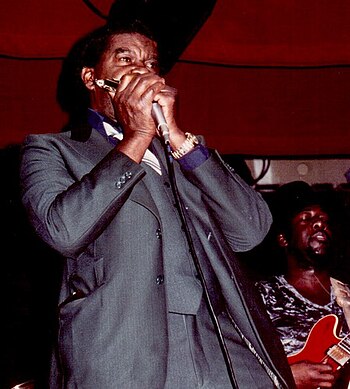 |
| Harmonica Blues Harp - Photo: Pixabay |
Harmonicas are wonderful musical instruments. They're versatile, they're relatively inexpensive, they fit in your pocket, and their music can evoke a wide range of feelings. Harmonicas - or harps, as they are commonly called - are used in a wide variety of musical genres, such as bluegrass, the blues, folk, rock, country, Gospel, jazz, and even Classical music.
If you want to learn to play the harp and are planning to take instruction, you should understand the different types of harmonicas that are available. The leading makers of harmonicas include Suzuki, Hering, Hohner, and Bushman. Beyond brands, though, there are other differences you should know about.
The harmonica that most people are familiar with is the ten-hole "Blues Harp." Each of the holes has two reeds, which are tuned to play different notes. Blues harps come in virtually every key, and each harmonica can play 19 musical notes.
Blues harps are a subcategory of diatonic harmonicas, so named because of the two reeds in each hole. Diatonic harmonics generally play only one key. Another type of diatonic harmonica is the octave harmonica, which is tuned so that each hole plays the same note, only an octave apart from one another. The tremolo harmonica also has two reeds, but one plays a slightly flat note and the other plays a slightly sharp note.
A different category of harmonica is the chromatic harmonica. These harmonicas typically have twelve, fourteen, or sixteen holes, and four reeds per hole. They also have a sliding bar that moves the air from the mouthpiece to a specific reed plate. Chromatic harmonicas are most often used in jazz and Classical music.
Harmonica Instruction
When you learn to play the harmonica, you'll first be taught how to breathe correctly. Because successfully playing the harmonica involves both breathing out and breathing in, it's important to breathe from your diaphragm. You'll also learn how to correctly hold the harmonica, how to move it, and how to position your lips so you'll achieve the right notes. You'll also learn harmonica tablature, or tabs, which in instruction that replaces the need for learning to read music. Harmonica tabs tell you what actions you need to take, such as blowing in the fifth and sixth holes, rather than simply showing you music notation. For example, tablature might indicate an upward arrow with a number above it, indicating that you need to blow on that numbered hole, followed by a downward area with a number on top, indicating that you need to inhale on that hole. Tabs make learning to play the harmonica much easier than learning to play other instruments.
Choosing a Harp
Most harmonica instruction is given in the key of C, so it's probably best to buy a diatonic or Blues harp in the key of C. Most experts recommend that beginners purchase harmonicas with plastic or aluminum combs (the body of the harmonica) rather than wood. Plastic and metal are both more comfortable and more durable. However, you should be aware that, over time, you'll probably buy and try several different brands of harmonicas. Each person is unique, and each has to find the harmonica that is the best fit for his or her playing style.






